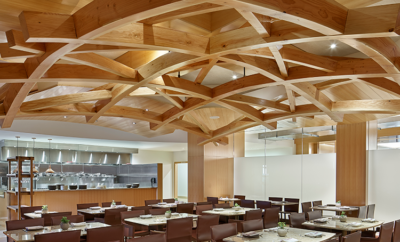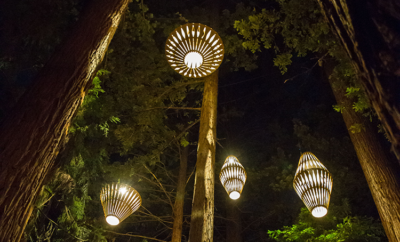 Installation view, Akari: Sculpture by Other Means. Akari Cloud. Isamu Noguchi, Akari A, D and F series (c.1954–1971). All photography by Nicholas Knight. ©The Isamu Noguchi Foundation and Garden Museum / Artists Rights Society (ARS).
Installation view, Akari: Sculpture by Other Means. Akari Cloud. Isamu Noguchi, Akari A, D and F series (c.1954–1971). All photography by Nicholas Knight. ©The Isamu Noguchi Foundation and Garden Museum / Artists Rights Society (ARS).
Design
Isamu Noguchi’s Iconic Akari Cast in a New Light
The Japanese-American sculptor Isamu Noguchi’s Akari light sculpture has long been a beloved design staple in many a modern home. The artist developed the idea of light sculptures in 1951 in Gifu, Japan at the Ozeki & Co., where the washi paper, bamboo, and metal lamps are still in production today. Inspired by the candle-lit lanterns along the Nagara River (made to illuminate night fishing), Noguchi updated the ancient craft by adding electricity, elevating the lantern to a twentieth-century design object and spurring the manufacture of limitless knockoffs.
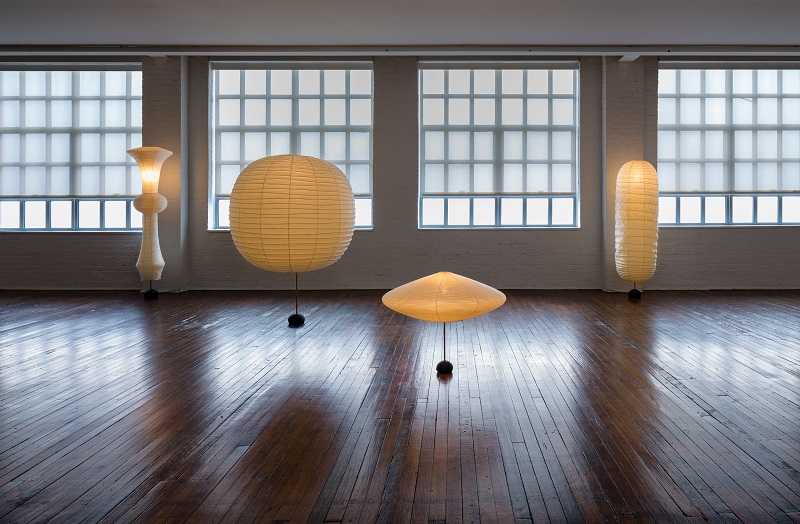
Installation view, Akari: Sculpture by Other Means. (From left) Isamu Noguchi, Akari H (c.1977), 125F (1971), 15A (1953), and 32N (1969), on BB2 and BB3 bases (1954).
“Its [Akari] allure has never diminished. Collapsible, easy to fold, and affordable, they organize space, produce light, heat, and support life; or, as Noguchi pointed out, ‘one Akari in an empty room generates the ineffable space-concept we call home,’” says Noguchi Museum’s senior curator Dakin Hart. “After Noguchi’s death in 1988 Akari became too codified, a fixed object so we decided to revisit Noguchi’s original intent of producing nuanced, flexible, modular lamps imbued with nature’s ephemeral quality.”
The exhibition Akari: Sculpture By Other Means, on view until January 27, 2019, is a corrective look at the sculptural ecosystem Noguchi created with light and space as the central materials he deployed to transform environments. A complementary, forward-thinking show, Akari Unfolded: A Collection by Ymer & Malta, explores Noguchi’s influence on contemporary designers.
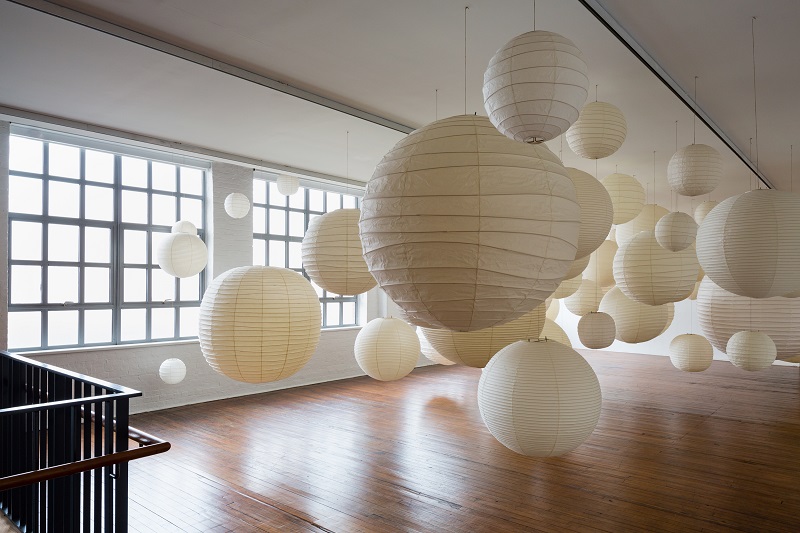
Installation view, Akari: Sculpture by Other Means. Akari Cloud. Isamu Noguchi, Akari A, D and F series (c.1954–1971).
The second floor galleries have been transformed into a magical fantasy space with the centerpiece, the Akari cloud, represented by ninety-two round lanterns titled A, D, and F (letters and numbers identify products) in varying proportions and suspended from the ceiling at different heights. “We assembled the lanterns in such a way so visitors could walk in freely to experience the effect of the slow motion of the lightweight washi paper,” explains Hart. “To intensify the ethereal, poetic beauty, we used a single track lighting system to emphasize the light streaming in from the industrial windows, simulating an actual cloud’s light emanating from within.”
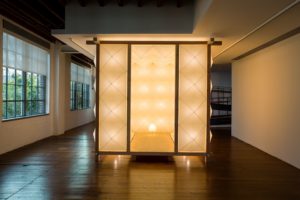
Installation view, Akari: Sculpture by Other Means. Isamu Noguchi, Akari PL2 (c.1973), and (inside) Akari 1A (1952). Wood enclosure by The Noguchi Museum (2018).
The Akari installation captures the notion of light as environment. Included in the exhibition is the PL1, a ceiling fixture, four feet wide and eight feet high, draped over a steel hanging bar; and the PL2, an eight-foot cube made of thirteen Akari panels affixed to a post-and-lintel frame. The 200D, a nearly seven-foot-tall globe made for Noguchi’s groundbreaking exhibition, What Is Sculpture, at the 1986 Venice Biennale, also featured thirty-four specially designed Akari lamps set alongside carved stone sculptures. The 200D sits majestically in its original wood-frame box.
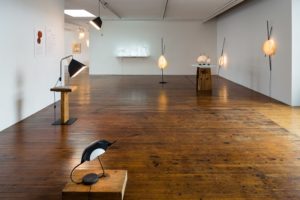
Installation view, Akari Unfolded: A Collection by YMER&MALTA. (Depicted on wall) Stephen Burks’s Volumes, in linen, metal, LED; Sebastian Bergne’s Poise, in paper, metal, LED; Nendo’s Light Fragments in acrylic, metal, LED; Océane Delain’s Belle de Jour in resin, linen, metal, LED.
Hart approached Valerie Maltaverne, founder of French design studio Ymer & Malta, to collaborate on the tandem exhibition Akari Unfolded, tapping contemporary designers—from Stephen Burkes to nendo—to reimagine the Akari. “In commissioning six designers, we asked each to incorporate Noguchi’s values and an interest in developing a cohesive collection,” says Hart. Highlights include Sylvain Rieu Piquet’s resin-and-linen Galet and Océane Delain’s paper-thin resin-coated linen stacked into forms similar to the Akari.
In addition to the many Akaris on display, there is a treasure trove of archival memorabilia to browse, providing excellent background on the iconic light-sculpture’s evolution.
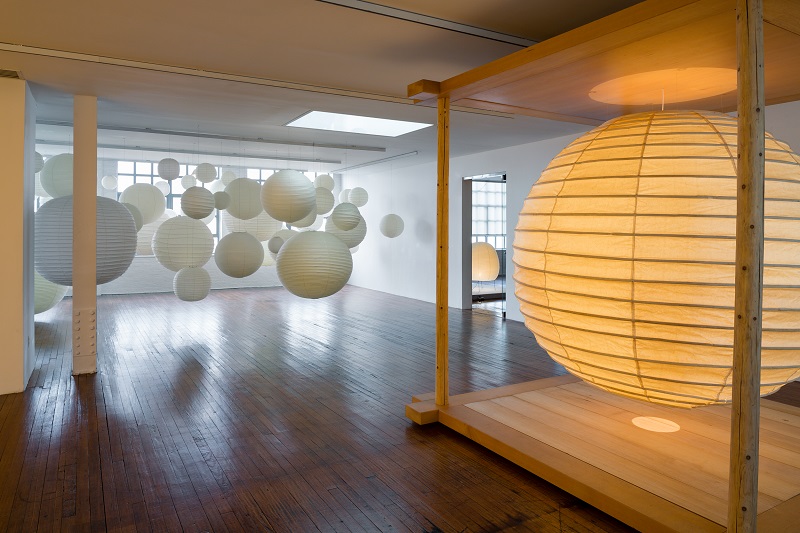
Installation view of Akari: Sculpture by Other Means by Isamu Noguchi. (From left) Akari Cloud, Akari A, D and F series, c.1954–1971, and 200D for the 1986 Venice Biennale, 1985.


